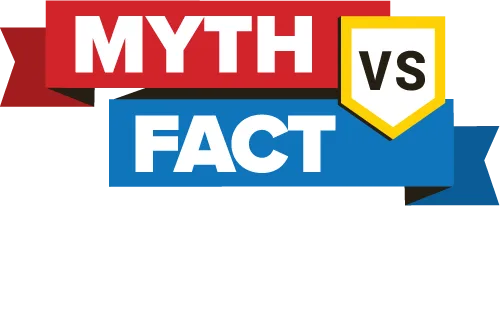
Home » Info for Families » School Choice » School Choice Myths vs. Facts
The Truth About School Choice in Texas
UPDATE
School Choice Coming to Texas
Senate Bill 2, officially establishing a statewide Education Savings Account (ESA) program, is likely to become law soon. However, the program would not begin until the 2026–2027 school year. We are committed to keeping you informed when implementation details are available.
Sign Up for Updates
Sign up for email updates to receive news on the ESA program as it becomes available.
When it comes to school choice in Texas, there’s a lot of misinformation out there. As a Texan, you deserve clear, accurate information to make the best decisions for your child’s education. That’s why we’re breaking down the most common myths and providing the facts—so you can separate truth from fiction. Whether you’re exploring private school options for your family or just want to understand what school choice really means for Texas, this guide will help you navigate the conversation with confidence.
Common Myths
- MYTH
School choice will divert money away from the public schools to private schools.
- FACT
In other states, funding increased and public schools improved
In states with the oldest and largest educational choice policies, the inflation-adjusted per-pupil funding has increased, and the average performance of district schools is as good or better than when the choice policies were first enacted.
- FACT
Public schools will still be a great option for families
Most students will continue to benefit from a public-school education, because the many advantages offered by public schools, such as sports and other extra-curricular activities, are attractive to families.
- FACT
Most families will choose schools based on location
School choice programs may slightly add to the fluctuation of student enrollment, but an overwhelming number of American families are still choosing schools based on ZIP code. School choice will give families in failing schools another option.
- FACT
School choice funds won't come from the same source as public school funding
Funding for school choice in Texas will come from the general revenue, not funds that are set aside for public schools.
- MYTH
School choice gives taxpayer money to wealthy families who send their children to private schools.
- FACT
Poor families are prioritized
The school choice proposal in Texas prioritizes helping poor and vulnerable students, with the goal of helping those who most need access to educational options. In the successful Florida program that the Texas bills are based on, the typical parent who participates is a single mother of color earning $43,000 per year.
- FACT
School choice levels the educational playing field
The wealthy already benefit from school choice because they have the means to pay for private school or the means to move to live in the best public-school districts. They do not need these programs. The economically disadvantaged do.
- MYTH
School choice funnels taxpayer dollars to private schools without transparency, accountability, or oversight.
- FACT
Private schools must be accredited
The school choice proposal in Texas stipulates that funds only go to accredited private schools. Read more about accreditation.
- FACT
Accreditation ensures high curriculum standards
Private school accreditation is a detailed process that covers curriculum standards and fiscal oversight. Accreditation requires that the curricula used in private schools be at least as rigorous as that used in public schools. Many private schools choose curriculum that is even more rigorous than that used in public schools
- MYTH
This proposal is just the beginning; this program will expand to take more and more public-school funding.
- FACT
Only successful programs will expand
School choice programs will only expand if they are successful, and families demand more access. This means students are being well-served by having increased choice.
- FACT
32 other states happily have some form of educational choice
Some form of private school choice currently exists in 32 states. These programs co-exist beautifully with robust public school systems.
- MYTH
School choice violates the separation of church and state.
- FACT
The U.S. Supreme Court said it is constitutional
The constitutionality of school choice programs has been proven many times, most recently in the 2022 U.S. Supreme Court case Carson v. Makin, where the court said Maine’s “nonsectarian” requirement violated the Free Exercise Clause of the First Amendment.
- FACT
School choice respects religious rights
Not all private schools are religious, but when all parents have the opportunity send their children to the school of their choice, this is not an endorsement of religion but the free exercise of a parent to choose their school.
- MYTH
Private schools will be able to pick their students, and the poor will remain left behind, if not pushed further back.
- FACT
School choice benefits poor students the most
Data from other states suggests that school choice benefits low-income students in major ways. Florida has the nation’s largest school choice program and the average household income is recipients is $43,123. 65% of program participants are Black and Hispanic, and 43% of the children are from single-parent households. Similarly, the average household income of recipients of the Illinois tax credit scholarship is $43,357.
- FACT
School choice increases college enrollment of low-income students
School choice can boost college enrollment among low-income students. According to a study by the Urban Institute, 57% of Florida Tax Credit Scholarship students enrolled in college, compared with 51% of non-scholarship students. Students in Florida had higher college-going rates in all sectors: two-year, four-year public, and four-year private colleges.
- MYTH
School choice will hurt rural schools the most.
- FACT
Rural parents can choose rural public schools
Parents in rural areas will still have the option to send their kids to rural public schools. In general, rural schools are not beset by the problems in large, urban districts. They are smaller, safer, and more community-centered—the very reasons urban parents choose non-public options.
- FACT
Urban school choice will have no impact on rural districts
Non-public school options are not as available in rural areas. The likelihood of a rural school experiencing a mass exodus is remote. Families in another public school district choosing a non-public option will have no impact on the per-student funding in rural areas.
